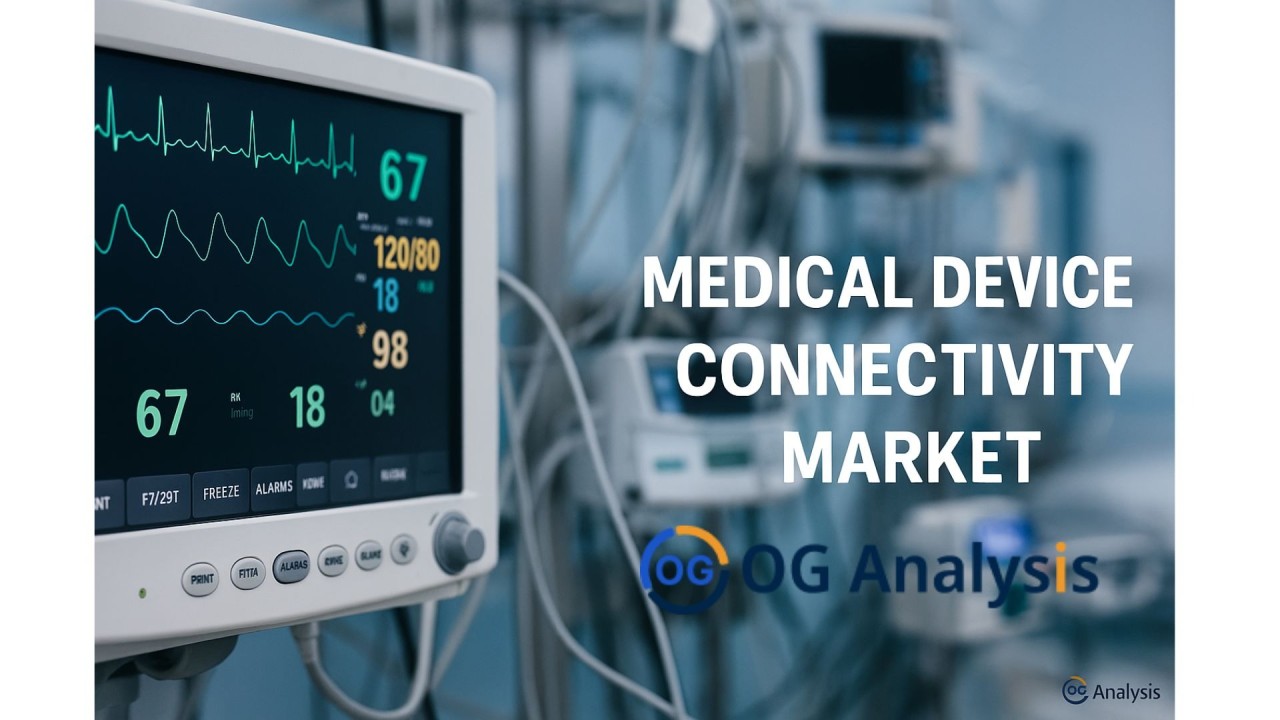🔗 Connecting Care: What’s Fueling the Surge in the Global Medical Device Connectivity Market?
The Global Medical Device Connectivity Market is on a remarkable trajectory—growing from USD 3.1 billion in 2024 to an anticipated USD 27.5 billion by 2034, clocking a powerful CAGR of 24.3%. This transformation isn’t just about technological upgrades; it’s about redefining patient care, hospital efficiency, and the future of remote health.
1. Why is medical device connectivity becoming a healthcare game-changer?
In today’s data-driven care environment, seamless integration between devices, systems, and platforms is no longer optional. Medical device connectivity enables real-time data exchange between ventilators, monitors, infusion pumps, and EHRs—reducing errors, improving patient outcomes, and streamlining workflow automation across ICUs and emergency rooms.
2. What’s driving the explosive CAGR of 24.3% in this market?
The answer lies in the convergence of telemedicine, AI diagnostics, remote patient monitoring (RPM), and digital therapeutics. Governments and hospitals are prioritizing interoperable systems, while aging populations and chronic disease management needs fuel continuous connectivity demand. Post-pandemic digital adoption has further fast-tracked investment.

3. Wireless, Wired, or Hybrid: Which technology is leading the race?
Wireless technology is emerging as the most flexible and scalable solution—crucial for mobile health, wearable integration, and home-based care. However, wired systems still dominate high-dependency units for reliability and security, while hybrid models bridge the gap by offering adaptable, fail-safe configurations for large-scale deployments.
Click Here To Access the Full Report
4. How are residential healthcare and home monitoring reshaping demand?
Aging populations and the rise of hospital-at-home programs have pushed residential healthcare into the spotlight. Patients now expect continuous, real-time monitoring beyond hospital walls. Devices integrated with cloud platforms, such as those from iHealth Labs and NantHealth, are revolutionizing RPM and chronic care delivery.
5. What innovations are big players like GE, Philips, and Cisco bringing to market?
Industry leaders are focusing on smart integration platforms, cybersecurity, and AI-enhanced telemetry.
-
GE Healthcare is developing adaptive connectivity suites for ICUs.
-
Philips continues to push real-time device data analytics.
-
Cisco Systems focuses on secure, scalable network infrastructures for large health systems.
Their goal? End-to-end visibility, interoperability, and patient-centered design.
6. How are interface and telemetry systems evolving with interoperability needs?
Interface devices are no longer just bridges—they’re intelligent nodes handling protocol translation, security, and synchronization. Meanwhile, telemetry systems are moving toward cloud-native architecture, enabling data to flow across disparate devices into a centralized, actionable stream for clinicians and health IT systems.
7. Which regions are setting the pace in medical device connectivity adoption?
North America leads with its mature digital health ecosystem, robust regulatory frameworks, and large-scale hospital networks. Asia-Pacific, however, is the fastest-growing region due to smart hospital investments in China, India, and South Korea. Meanwhile, Europe focuses on cross-border interoperability aligned with GDPR.
Click Here To Access the Full Report
Market Segmentation Snapshot: Key Categories and Regional Insights:
-
By Product: Medical Device Integration Systems, Interface Devices, Telemetry Systems
-
By Technology: Wireless, Wired, Hybrid
-
By End User: Residential, Commercial
-
By Region: North America, Europe, Asia-Pacific, Latin America, Middle East & Africa
Major Players in the Medical Device Connectivity Market
1. GE Healthcare
2. Philips Healthcare
3. Medtronic
4. Cisco Systems
5. Siemens Healthineers
6. Qualcomm
7. Lantronix
8. Infosys
9. Digi International
10. TE Connectivity
11. Cerner Corporation
12. Bernoulli Enterprise
13. True Process
14. iHealth Labs
15. NantHealth
Explore More Industry Insights:
Connect with us on:
Phone: +91 888 64 99099
Email: mailto:sales@oganalysis.com
Learn More about OG Analysis
OG Analysis, established in 2009 has 14+ years of experience and served 1800+ clients from 980+ companies operating in 54+ countries. OG Analysis is a leading provider of market research reports in Chemicals, Energy, Oil & Gas, Food & Beverage, Electronics & Semiconductors, Automotive, Telecommunication, Healthcare and Other industries.